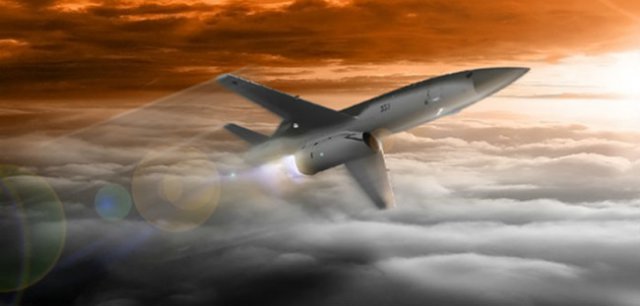 Kratos Defense & Security Solutions, a company based in Sacramento, Calif., is proposing its Unmanned Tactical Aerial Platform 22 (UTAP-22) to fill a need unmet by the slow unmanned aerial vehicles used for surveillance. The UTAP-22 is a high-performance unmanned aerial vehicle (UAV) with fighter-like capabilities.
Kratos Defense & Security Solutions, a company based in Sacramento, Calif., is proposing its Unmanned Tactical Aerial Platform 22 (UTAP-22) to fill a need unmet by the slow unmanned aerial vehicles used for surveillance. The UTAP-22 is a high-performance unmanned aerial vehicle (UAV) with fighter-like capabilities.
The UTAP-22 is based on the company’s BQM-167A, a sub-sonic aerial target designed to perform threat simulation of a high-performance threat aircraft and/or threat missiles. The BQM-167 has a speed in excess of 0.91 Mach and can operate at altitudes from 40 feet to more than 50,000 feet.
The turbojet-powered UTAP-22 is 20 feet long with a wingspan of 10.5 feet. It is launched from a ground site using a rocket-assisted takeoff booster and is recovered after parachuting in the water or on land. Changes from the BQM-167A include some airframe modifications, a mission computer, a data link and a command-and-control system.
Development of the UTAP-22 has been funded by the company, which built two air test vehicles and one ground test vehicle. The company flew three demonstration flights late last year at the Navy Test Range in China Lake, Calif. The UAV was flown in formation with an AV-8B Harrier II attack aircraft in a demonstration of manned/unmanned aircraft teaming.
The UTAP-22 successfully coordinated semi-autonomous payload deployment, breaking formation to perform independently and then rejoining the formation. Hand-off from one controller to another was demonstrated, as well as control of multiple vehicles with a single operator. The data link used was Rockwell Collins’ Tactical Targeting Network Technology.
A potential tactical scenario is one in which a manned aircraft, with a back-seater using a tablet, controls numerous UTAP-22s to overwhelm enemy defenses. Potential missions include strike and electronic attack.
The UTAP-22 “is ready for weapons integration and demonstration to the fleet,” said retired Rear Adm. Dennis FitzPatrick, vice president for Tactical Platforms Operations in the Unmanned Systems Division of CEi.
FitzPatrick sees the UTAP-22 as a fit with the Defense Department’s Third Offset Strategy to pursue low-cost but very capable technologies, including unmanned autonomous strike aircraft and other systems, to regain initiative and sustain a technological edge.
He stressed the low-cost of the UTAP-22 compared with current manned tactical jets, enabling it to be produced in greater quantities than strike fighters and reducing exposure of flight crews to enemy defenses while multiplying the mission effects.
“We fit very well in the conversation today,” FitzPatrick said.
Source: Seapower
